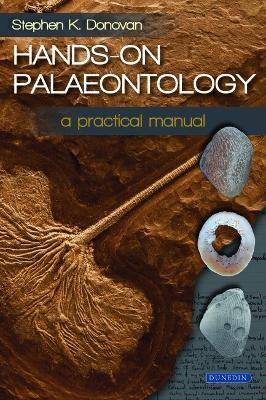
Hands-on Palaeontology
Liverpool University Press (Verlag)
978-1-78046-097-0 (ISBN)
There are many books on palaeontology, aimed at amateurs, undergraduates and aspiring academics. Perhaps commonest amongst these are guides to fossil identification, from the general (basic texts on fossil variety and morphology) to the specific (field guides to specific groups, localities or horizons). Many of these are readable, comprehensive and provide good advice. This is not such a book - there is more to the subject than just putting a name on a specimen, however important that may be.
As the book’s title states, this is a practical manual covering the many aspects of palaeontology. It is organised in fifty-three chapters; each chapter focusses on one aspect of palaeontology as viewed with a geologist’s trained eye. It can be read from cover-to-cover or dipped into when an answer to a specific question is needed. The aim is to help the developing palaeontologist move their skills on to the next level.
It is aimed, primarily, at the beginner in the broadest sense, both amateur and undergraduate. Palaeontologists and geologists are encouraged to use the book as much as a reference as a reader, dipping in to the chapters that contain relevant tips, hints and comments to enable them to improve their understanding of their current interest. It is informative, readable and, most of all, of practical application for all palaeontologists.
Professor Stephen Donovan has been publishing on such diverse subjects as palaeontology, Caribbean geology, the history of science, ichnology and academic publishing for over 35 years. He loves researching the fossil record and writing about it.
Acknowledgements. Sources. Foreword (by Professor David A.T. Harper, Durham University). Introduction. Getting started: 1. How to collect; 2. Where to collect; 3. What to collect; 4. The field notebook; 5. Measuring sections (and why); 6. The Law of Superposition; 7. Fossiliferous sedimentary rocks: Siliciclastics; 8. Fossiliferous sedimentary rocks: Limestones, cherts and coals; 9. Reworked fossils; 10. Fossils as way-up structures; 11. Fossils as current indicators; 12. Your palaeontological library; 13. Fossils in caves 14. Beachcombing; 15. Common sense in the field; 16. Collecting with a camera; 17. Buying specimens. Some theoretical aspects: 18. Palaeoecology 1: The organism; 19. Palaeoecology 2: Organism meets organism; 20. Palaeoecology 3: Getting more information from the bed; 21. Preservation 1: Fossilization; 22. Preservation 2: Death; 23. Preservation 3: Disarticulation, transport and residence ; 24. Preservation 4: Burial and diagenesis; 25. Trace fossils. Working on your collection at home; 26. Storage; 27. Labelling; 28. Photography at home; 29. Drawing; 30. Specializing in your favourite fossil group; 31. Writing descriptions; 32. Casting from natural moulds; 33. Problems with preservation. The wider field: getting involved; 34. Collaboration; 35. Scientific societies; 36. Conferences; 37. Journals and magazines; 38. Offprints, PDFs and filing; 39. Visiting museums; 40. Ideas for further involvement; 41. Publishing I: Persuading you to get involved; 42. Publishing II: The hard work of self-editing; 43. Publishing III: How to publish a new species. Fossils in many fields: 44. The field guide; 45. Field trip: Den Haag, the Netherlands; 46. Field trip: The Piltdown Trail; 47. Field trip: Overstrand to Cromer, Norfolk; 48. Field trip: Cleveleys, Lancashire; 49. Field trip: Queen Victoria’s bathing beach, Isle of Wight; 50. Field trip: Salthill Quarry, Clitheroe; 51. Field trip: Hurdlow, Derbyshire; 52. Field trip: Antigua. Glossary. Index.
| Erscheinungsdatum | 25.06.2021 |
|---|---|
| Zusatzinfo | Col. illus. |
| Verlagsort | Liverpool |
| Sprache | englisch |
| Maße | 156 x 234 mm |
| Gewicht | 482 g |
| Themenwelt | Naturwissenschaften ► Geowissenschaften ► Mineralogie / Paläontologie |
| ISBN-10 | 1-78046-097-X / 178046097X |
| ISBN-13 | 978-1-78046-097-0 / 9781780460970 |
| Zustand | Neuware |
| Haben Sie eine Frage zum Produkt? |
aus dem Bereich


